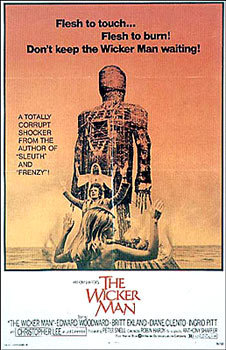The Good, The Bad, The Ugly: Film Remakes, Part Two
Published on January 30th, 2009 in: Issues, Movies, Retrovirus |By Michelle Patterson
Read Part One of this series here.
In the previous installment, I explained what separates the good film remakes from the bad and the ugly. There should be a lot of care taken to avoid any of the mistakes of the past, or in the case of a particularly artistic original film, one should not overdo what made that film so good in the first place. Bludgeoning the audience to get a message across won’t make them roll over like kittens and beg for their bellies to be scratched; it will leave them numb and confused, desperate to go home and crawl under the covers to make it all just go away.

The careful dissection, layer-by-layer, of conventions, ideals, and expectations of an audience—and the subsequent delicate, reconstructive surgery of their collective brain—is the correct method to follow for horror film remakes. The horror film that sustains that feeling of dread long after it should is the mark of success. One should be scared and weak even after the credits roll; even after entering the safety of one’s own car; and even after exiting the drive-through for a burger and fries.
At first, I thought horror and drama film remakes would encounter similar troubles. Upon closer examination, though, the horror film is a mutated bastard child with specific problems unlike any other. With dramas, you expect to be moved, and maybe have a clearer understanding of the morals presented by the movie. Whether it is a romantic, war-based, or a period piece, the conclusion in our heads should be the same: we don’t expect the stakes to be raised, the characters to receive retribution or enact vengeance, or the end to be wrapped up in a question mark. But with horror films, we expect all of these things, and more.
Horror films have most of us rooting for the worst to happen. Otherwise, what would be the point? The moral center is the clearest thing about the scary movie. People are punished for something that their enemy finds to be the worst offense; the audience is challenged with figuring out exactly what this sin is and why it is so reprehensible. Settling of scores is the lifeblood of every horror film.
Often, with horror film remakes these basic concepts are thrown away. Often, the only mantra the directors seem to chainsaw into the floor is, “LOUDER, BLOODIER, DUMBER!'” Another set of failures is a sub-genre of horror flicks I like to call “Dawson’s Tomb,” a.k.a. the remakes of classics for the teen and college set. Remakes like The Texas Chainsaw Massacre or House of Wax are just bloody music videos with overwrought dialogue and inane drama. The gory moments are rushed through to get to the “But, I like, love her, and I should—gulp—tell her!” realizations. The moral code is abandoned for romantic reunions and family bonding. Unless those reunions and bonding are covered in blood and guts, they don’t belong in horror.
Pages: 1 2
One Response to “The Good, The Bad, The Ugly: Film Remakes, Part Two”
March 10th, 2009 at 12:50 pm
[…] Popshifter » The Good, The Bad, The Ugly: Film Remakes, Part Two Says: January 30th, 2009 at 11:07 pm […]
Time limit is exhausted. Please reload the CAPTCHA.